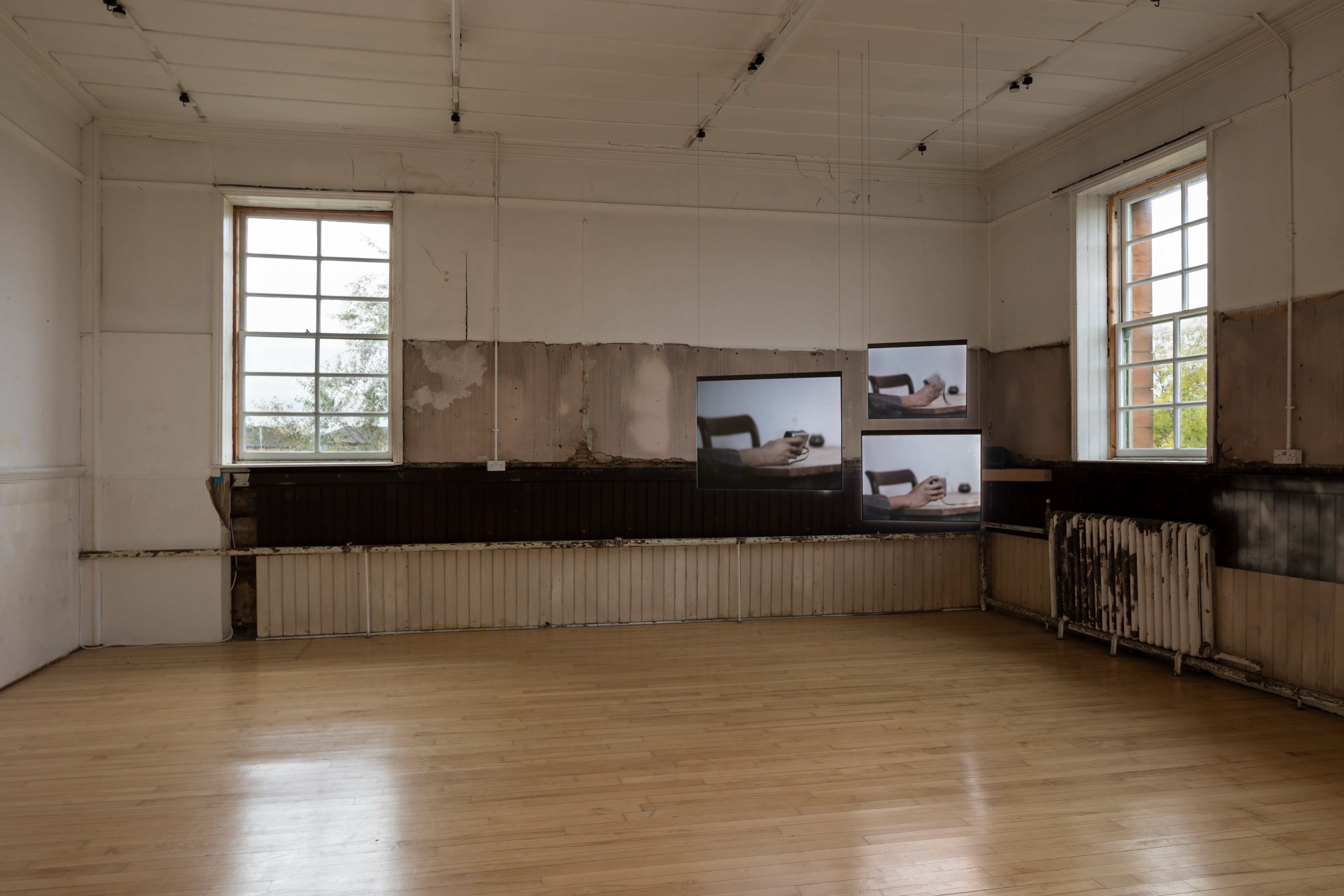Formally trained as an architect, Condorelli’s starting point is a fascination with space. Breaking down the spatial, political, conceptual and cultural terms of a particular space or place, Condorelli challenges the systems and boundaries between labour and leisure, public and private, art and function. Spanning across the gallery space and former natural history museum of the Talbot Rice Gallery, After Work functions simultaneously as a display, artwork and process of thinking. Reversing the function of the gallery space – a space to see a final product – Condorelli focuses on the experience of transformation and the labour of process. Condorelli’s broader research interrogates the potential of culture in society: how can we support the making of culture? Who has the leisure time to access it? What purpose does it have? Can artistic production be defined as work if it is born to satisfy the needs of leisure and entertainment for others? The exhibition is broad in scope, displaying bodies of work from Condorelli’s over twenty year career. And yet, there is a consistency to Condorelli’s approach: her explorative openness to collaboration with fellow artists, friends, nature and the gallery space.

The usually-austere gallery setting is transformed by a garden laden with philodendrons, ornamental rocks and sheltered by Brise-Soleil sun shades, accompanied by a soundtrack ‘to let the city in’. For the first time the Talbot Rice has revealed its windows, allowing light to fill the space and adjusting the divisions between interior and exterior, public and private space. The sun-lit installation is intended to offer a space for people to interact, rest and find comfort, allowing an intimacy with form that isn't usually allowed with cultural objects. Based on eighteenth-century museum and garden benches and informed by the Brazilian modernist architect Lina Bo Bardi, the work is an expansion upon Condorelli’s Zanzibar series (2018-ongoing). The surrounding walls are filled with models and drawings including those of plants that used to inhabit exhibition interiors in New York’s MoMA. Houseplants do not appear in the history of art, yet they have shared spaces with artworks throughout the history of exhibitions. A pursuit of restoring attention to things that are generally overlooked, the things that provide vital support to things, is at the base of Condorelli’s artistic project.


This idea of support – the objects, props, structures or people that frame, stand behind, care for or encourage – is crucial to how we experience the world. For instance, the curtain – a recurrent motif in Condorelli’s work – does not exist without its hanging mechanism, without its supporting structure. Her inquiry into the (in)visibility of processes continues in her Cotton/Rubber series. The work documents her research at the Pirelli Factory in Turin, commenting on her observations into how work is executed, the process of the creation of things, reality and the world in general. On the conflation of material processes and social relationships, she explains, “The visibility of labour is fragile, precarious, as it is often represented by the very things that obscure it (produced objects). Labour takes place in and through material production, which is how I am using these images to peel back the layers of its making.”


Support structures in communities are explored in After Work (2022) – from which the title of the exhibition is taken – a film and installation made in collaboration with artist/filmmaker Ben Rivers and poet Jay Bernard. The work documents moments from a playground that Condorelli was commissioned to make on a housing estate in South London. Monkey bars from a playground doubles as a space of play and a viewing platform in front of the screen. The physical act of play is important in Condorelli’s practice – climbing, holding, touching, measuring oneself against the world and testing possibilities – directly challenging the idea that objects in a museum are objects to be looked at from a distance. For Céline, intimacy within culture is vital.

In Thinking through Skin (2021-22), an installation dissecting the future of colour and image production, Condorelli displaces the locus of consciousness from the brain to the skin, which becomes the site of enunciation. The work is centred around Condorelli's research into cephalopods e.g. octopuses, squids or cuttlefish, species that perceive landscapes through their skin and attempts to mimic the mimicker, breaking down how cephalopods respond to their surroundings. This action of displacement emphasises the physical interior of the body and the emotions and feelings it generates. She asks, ‘Our everyday language knows that we think in a bodily way. We understand the primacy of seeing things in the flesh, do we not?’ Huge colour prints of organic patterns and converging forms line the walls and a swathe of material drapes across freestanding barriers. The former museum space is divided by a sliding curtain framing a screen running Ben Rivers’ 2016 film, Urth. The film is centred on constructed environments and the impossibility of an idealised world. A table displays numerous objects made by fellow artists and thinkers: fossils, a preserved goldfish, a head of the Egyptian god Horus, and a concrete block bearing two aerials by artist Isa Genzken.


Collaborating, indexing and testing, Condorelli’s practice builds on the legacies of artists, thinkers, architects and designers, highlighting new forms of communication and new languages that could accommodate the restructuring or reimagining of the future. After Work at Edinburgh College of Art’s Talbot Rice offers a possible way out of our terminal political, cultural and ecological crisis, imagining a different world to the one that we inhabit.
After Work is first survey exhibition showcasing Céline Condorelli's work. The exhibition runs until the 1st October, 2022. Everybody is welcome and entry is free for all.




